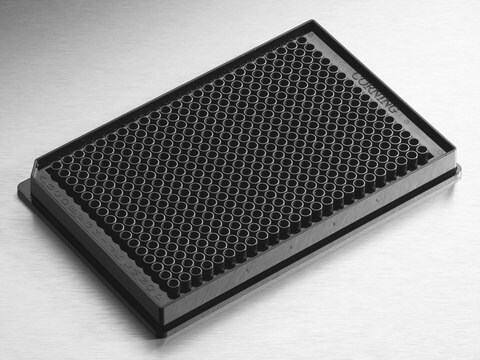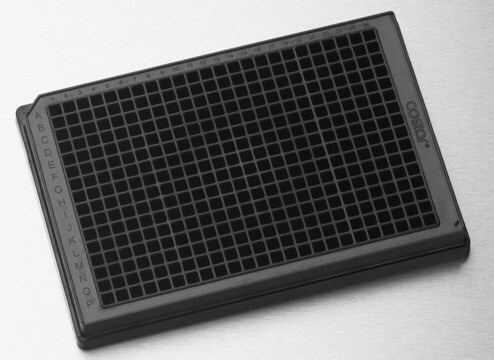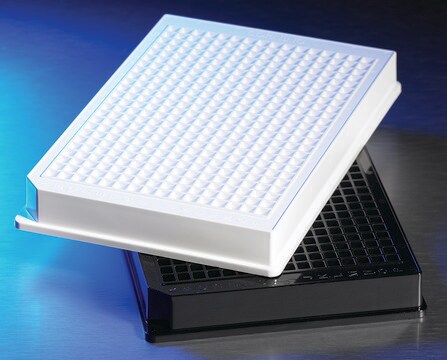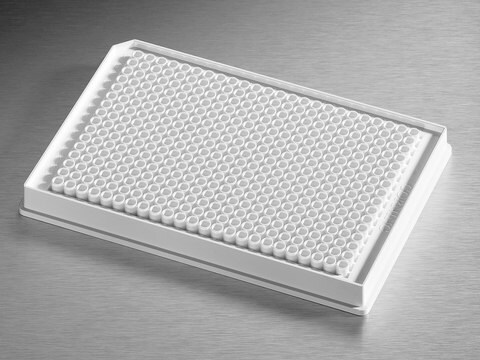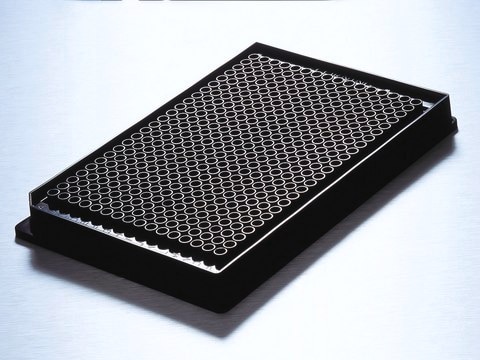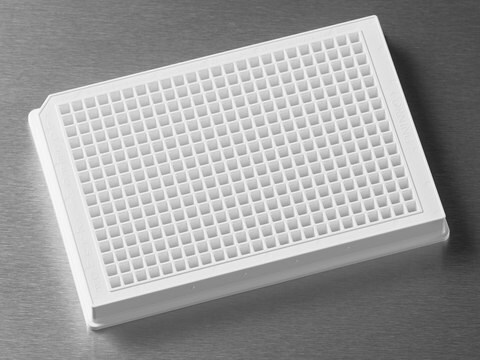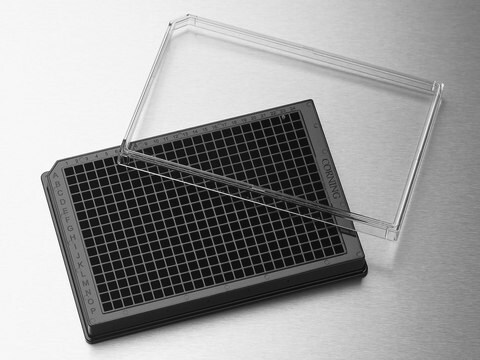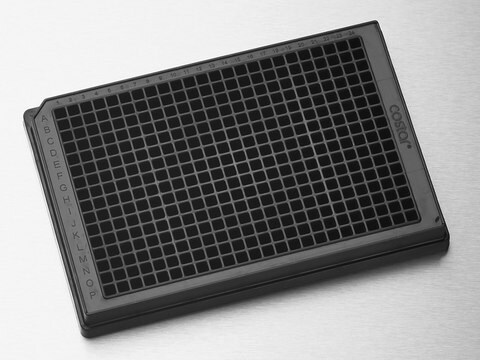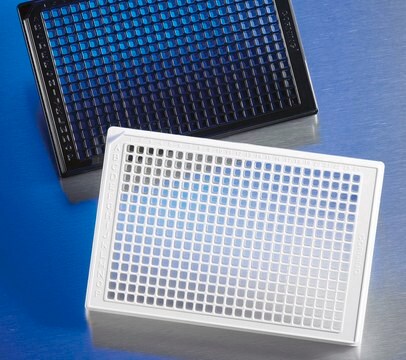CLS4514
Corning® 384 well microplate, low volume
surface treatment, Non-binding Surface, black polystyrene, U-bottom, non-sterile, lid: no, pack of 10
Synonym(s):
Corning® 384 well microplate, low volume | Sigma-Aldrich
About This Item
black bottom
black polystyrene
skirt
U-bottom (black)
Recommended Products
material
U-bottom
black bottom
black polystyrene
sterility
non-sterile
feature
lid: no
skirt
U-bottom (black)
packaging
pack of 10
manufacturer/tradename
Corning 4514
well volume
35 μL
wells
384 wells , low volume
working volume
2-20 μL
binding type
NBS™ (non-binding surface)
Looking for similar products? Visit Product Comparison Guide
Related Categories
General description
Application
Features and Benefits
- It has a square well that makes robotic pipetting more convenient
- Rounded bottom to reduce trapped air and increased Z factor
- For efficiency, a light cone-shaped conical well is used
- During fluorescent experiments, the presence of opaque walls diminishes autofluorescence and crosstalk between wells
- Microplates have non-ionic hydrophilic surfaces as a result of nonbinding surface technology treatment, which reduces molecular interactions
Legal Information
Choose from one of the most recent versions:
Certificates of Analysis (COA)
It looks like we've run into a problem, but you can still download Certificates of Analysis from our Documents section.
If you need assistance, please contact Customer Support.
Already Own This Product?
Find documentation for the products that you have recently purchased in the Document Library.
Customers Also Viewed
Protocols
Jump dilution protocol to determine the residence time of a drug (or drug candidate) during its interaction with a kinase using a fluorescence polarization assay based on the detection of ADP.
Our team of scientists has experience in all areas of research including Life Science, Material Science, Chemical Synthesis, Chromatography, Analytical and many others.
Contact Technical Service